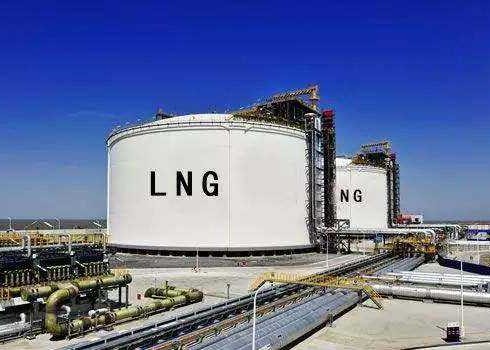SunSirs: China LNG "Buyer's Market" Characteristic in the Second Quarter 2020, Price Plummeted by 25%
July 03 2020 10:08:39 SunSirs (Selena)
In the second quarter, China domestic LNG market showed a sharp downward trend, repeatedly hitting new lows and occasionally a small rise. In the off-season of consumption, as well as the sharp decrease in terminal demand caused by COVID-19, a large amount of imported gas was constantly entering the domestic market, the contradiction between supply and demand was becoming increasingly serious, the buyer's market was becoming more and more obvious, and the LNG price falls again and again. At present, the domestic LNG market was at a historical low.
From April to May of 2020, the decline of LNG was obvious, and in June, the decline slows down and the low level. According to the data of SunSirs, the average price of LNG on June 30 was 2,450 RMB/ ton, down 2.39% compared with the end of May, 16% lower than that at the end of April, and 27.66% compared with the same period last year. In the second quarter of 2020, domestic LNG fell by 25.3%.
In April, heating season was end in northern China, and China's LNG market gradually entered the off-season. As the international oil price continued to fall, even negative value appeared which affected the price of LNG import long-term association. The price of domestic LNG shipment was under pressure, and the price dropped sharply, rapidly falling below 3,000 RMB/ ton, hovering on the cost line, and the profits of LNG plants were seriously reduced.
On May 20, the fixed price of feed gas in Western PetroChina was no longer 1.57 RMB/ m3. Instead, it was adjusted to implement the step price mode according to the unit load. The benchmark price was 1.48 RMB/ m3, the inlet load was more than 80%, and the gas price was 1.332 RMB/ m3. The more gas was used, the cheaper the feed gas price was. This favorable situation increased the adjustable space for LNG price and temporarily eased the cost inversion situation of some LNG plants. However, following the production restriction and shutdown of some factories in some regions, the industrial gas consumption decreased and the price continued to drop. Some LNG plants entered the maintenance plan ahead of time. At the end of May, the domestic LNG price was about 2,500 RMB/ ton, which was a new low.
In June, the decline of domestic LNG slowed down and the price remained low. In the off-season of consumption, the superimposed intake gas greatly yielded profits, and the domestic LNG industry failed to support the market. The upward road of LNG was fleeting, and continued to decline after short-term stability in the middle of the year. According to the data of SunSirs, the average price of LNG on June 30 was 2,450 RMB/ ton.
From January to May in 2020, 78.8 billion m3 of natural gas was produced, with a year-on-year increase of 10.1%. From January to May 2020, the output of domestic LNG plants was 6.33 million tons, with a year-on-year increase of 34.94%; from January to May, the total LNG supply was about 13.7 million tons, with a year-on-year increase of 32.44%. In the market, the supply was sufficient, but the demand was insufficient, and the LNG price was hovering at a low level.
According to the data, from January to May 2020, China imported 40.12 million tons of natural gas, a year-on-year increase of 1.9%; the cumulative import volume reached $15.161 billion, a year-on-year decrease of 15.6%. Among them, the total import of LNG was 25.48 million tons, up 7.0% year-on-year; the import volume was $10.405 billion, down 15.3% year-on-year. At present, China's main LNG importing country is Australia. Due to the sharp drop of international oil price in the early stage, the price of imported LNG has been continuously reduced, and China is a big consumer. With the steady recovery of economy and the increase of demand, the import volume of low-cost gas continues to grow. This state is expected to continue, and domestic LNG is in a difficult situation.
Natural gas is used in many fields, such as residents' life, industry and commerce, power generation, transportation, distributed energy and other fields. In 2019, the downstream users of LNG are mostly concentrated in industrial users and gas stations. This year, due to the late resumption of production and work of downstream enterprises, the demand of downstream users for LNG is sharply reduced. In the second quarter, downstream enterprises returned to work and production, and imported gas with high quality and low price entered the market. The apparent consumption of LNG increased rapidly. From January to May, the apparent consumption of LNG increased by 13.1% to 69.3 billion m3.
LNG analysts in SunSirs believe that at present, the growth rate of natural gas demand is slowing down, supply exceeds demand, and the buyer's market features are obvious. Now the LNG price has fallen to a low level, while the demand is insufficient, it is difficult to have a good expectation in the short term. The domestic LNG may continue to be low, and the future market still needs to be improved.
If you have any questions, please feel free to contact SunSirs with support@sunsirs.com.
- 2025-12-19 SunSirs: China's LNG Imports Reach Approximately 1.35 Million Metric Tons for the Week of December 8-14
- 2025-12-17 SunSirs: China's Natural Gas Production to Reach 300 Billion Cubic Meters by 2030
- 2025-12-16 SunSirs: China’s Largest Coalbed Methane Field Hits Daily Output of 10 Million Cubic Meters
- 2025-12-16 SunSirs: China Pipeline Natural Gas Spot Price Officially Released
- 2025-12-15 SunSirs: 2025 China Crude Oil and LNG Production Hits a New High



